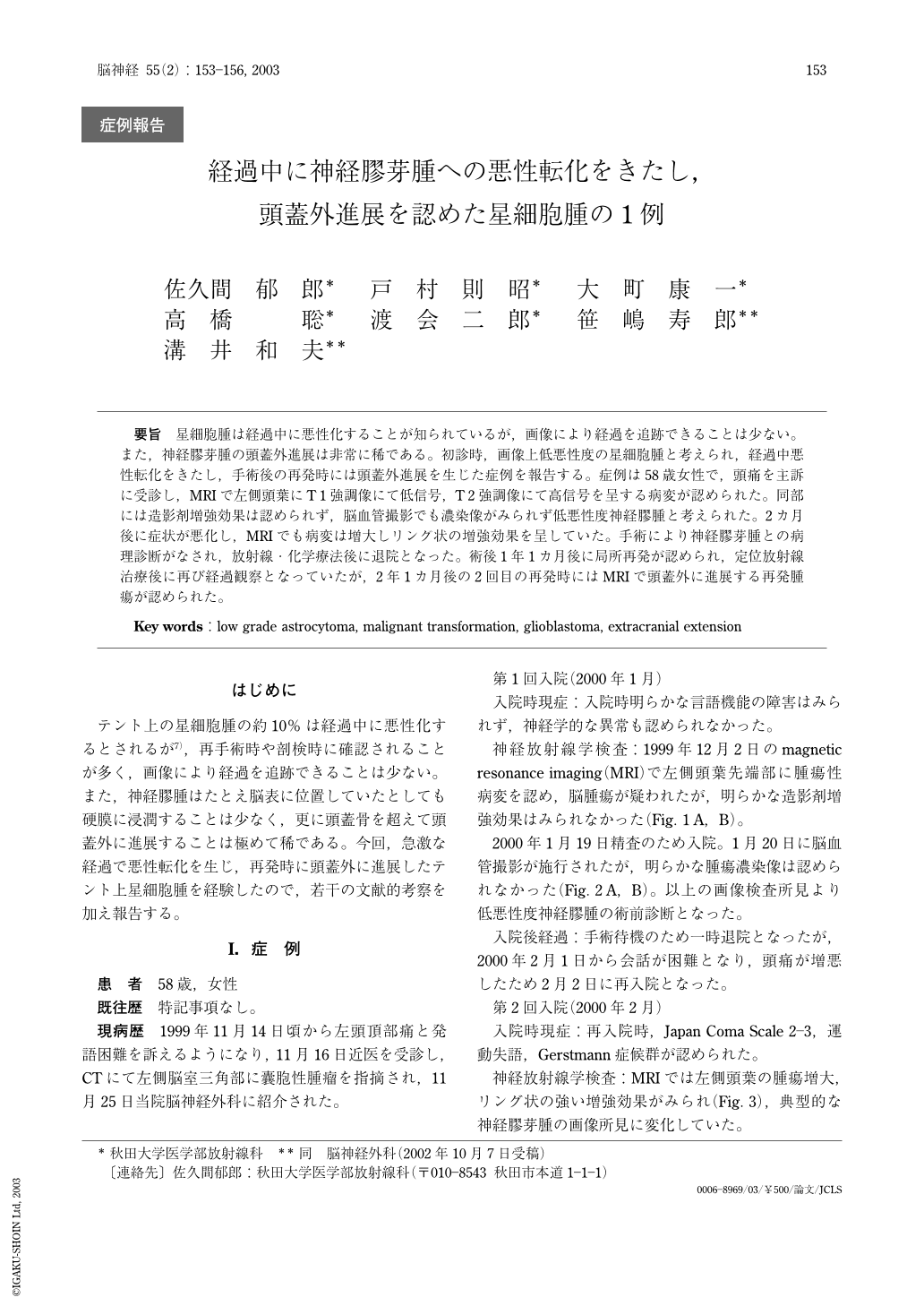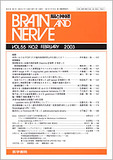Japanese
English
- 有料閲覧
- Abstract 文献概要
- 1ページ目 Look Inside
要旨 星細胞腫は経過中に悪性化することが知られているが,画像により経過を追跡できることは少ない。また,神経膠芽腫の頭蓋外進展は非常に稀である。初診時,画像上低悪性度の星細胞腫と考えられ,経過中悪性転化をきたし,手術後の再発時には頭蓋外進展を生じた症例を報告する。症例は58歳女性で,頭痛を主訴に受診し,MRIで左側頭葉にT1強調像にて低信号,T2強調像にて高信号を呈する病変が認められた。同部には造影剤増強効果は認められず,脳血管撮影でも濃染像がみられず低悪性度神経膠腫と考えられた。2カ月後に症状が悪化し,MRIでも病変は増大しリング状の増強効果を呈していた。手術により神経膠芽腫との病理診断がなされ,放射線・化学療法後に退院となった。術後1年1カ月後に局所再発が認められ,定位放射線治療後に再び経過観察となっていたが,2年1カ月後の2回目の再発時にはMRIで頭蓋外に進展する再発腫瘍が認められた。
A case of astrocytoma with extracranial extension after malignant transformation is presented. The patient was a 58-year-old female who suffered from headache. The initial magnetic resonance imaging(MRI) demonstrated a slightly hyperintense tumor on T2-weighted images in the tip of the left temporal lobe, and no contrast enhancement on gadolinium-enhanced T1-weighted images(Gd-T1WI). On digital subtraction angiography, there was no tumor staining. The initial diagnosis was made as low-grade astrocytoma. However two months later, her symptoms aggravated suddenly. MRI revealed a remarkably growing tumor with ring-like enhancement on Gd-T1WI. She underwent a temporal lobectomy, which pathologically demonstrated a glioblastoma. After surgery, chemotherapy and radiotherapy were performed. The tumor invades the skull base and extended into the infratemporal fossa 25 months after surgery.

Copyright © 2003, Igaku-Shoin Ltd. All rights reserved.


